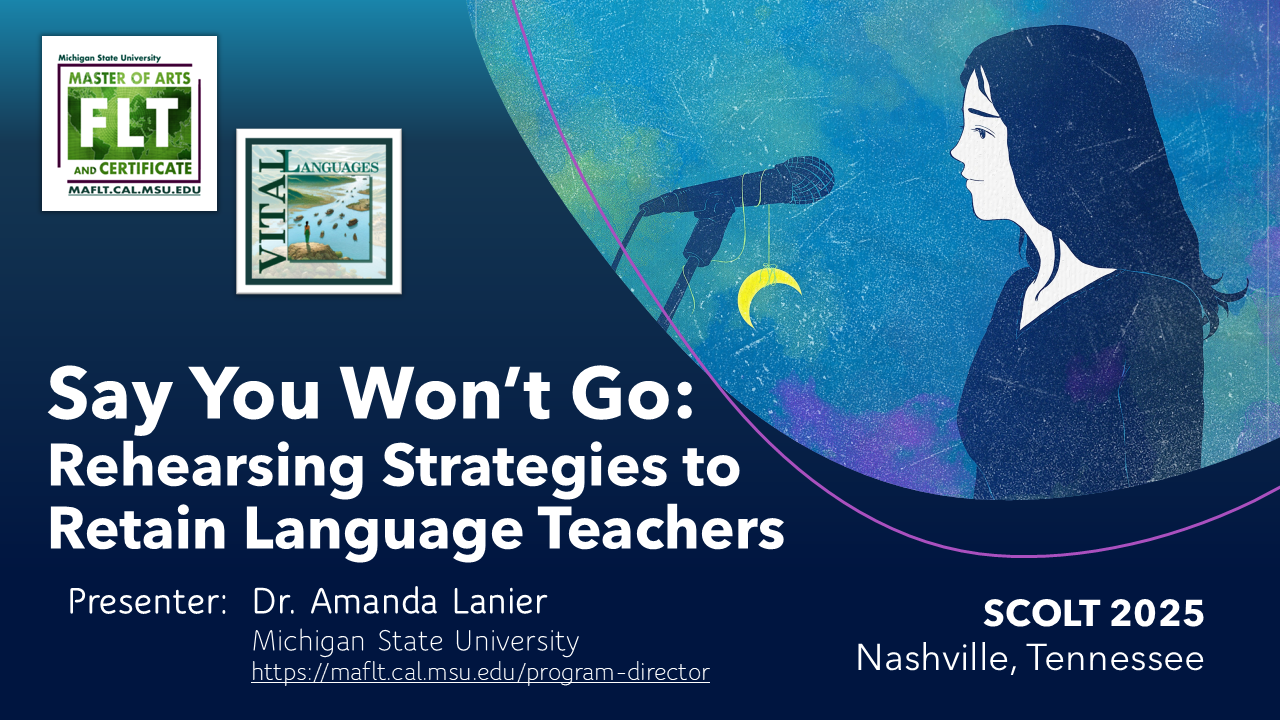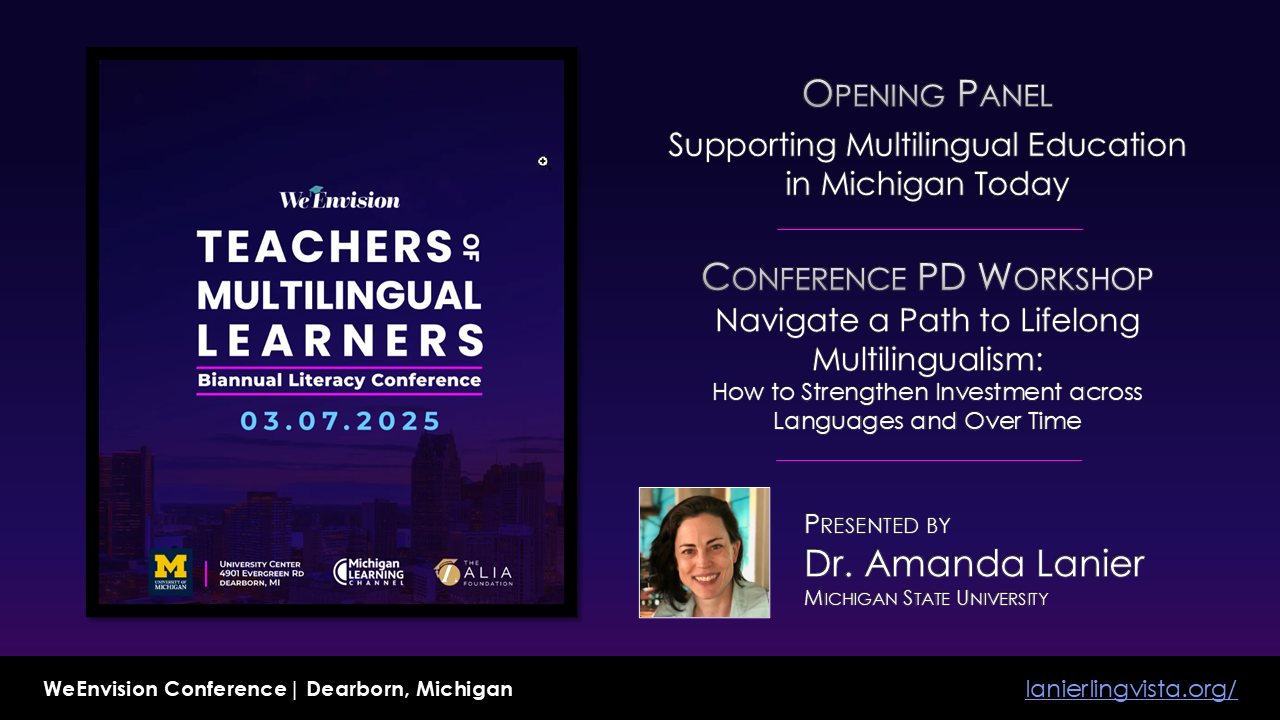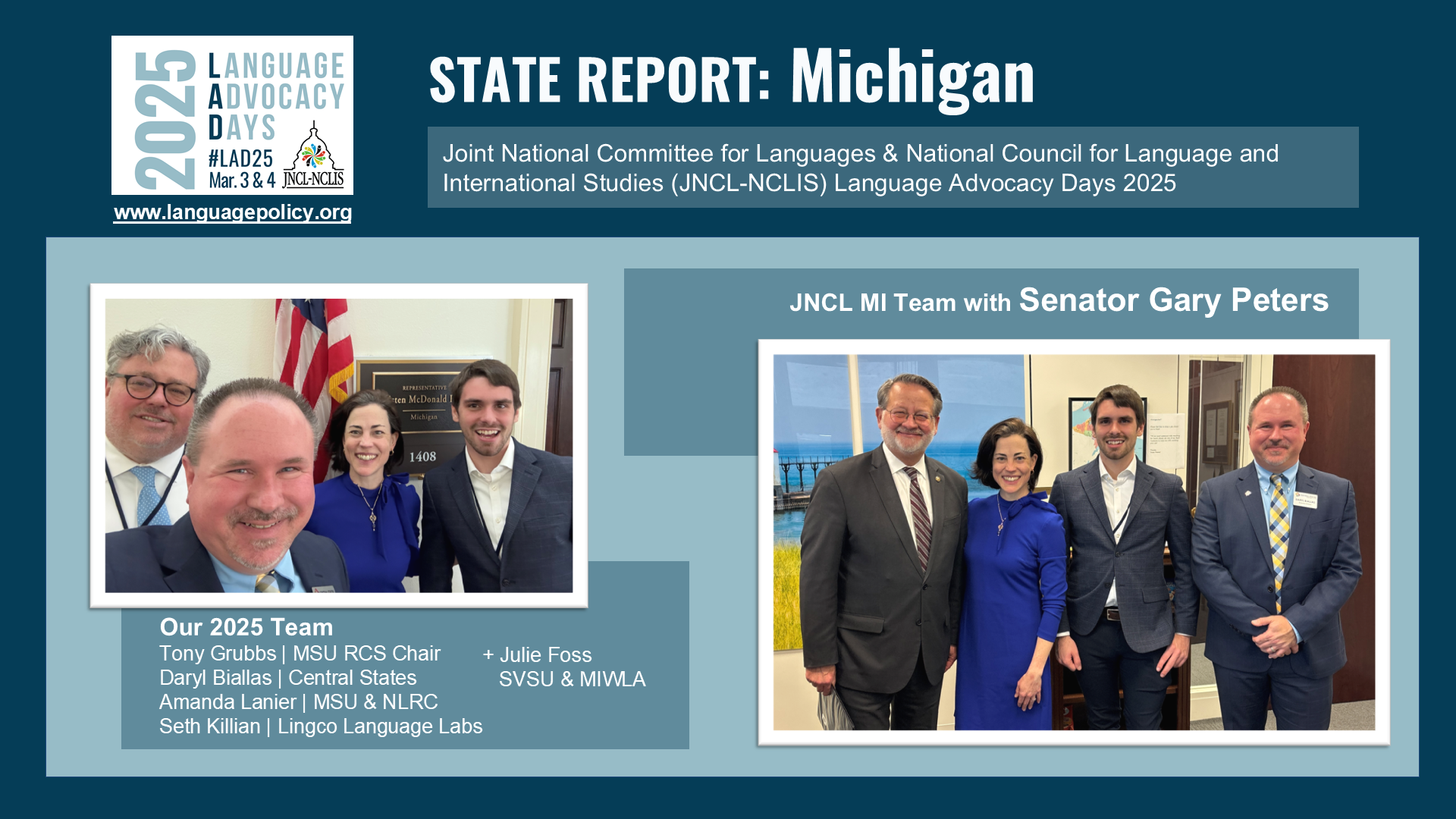Originally posted in October 2019 | Minor updates in January 2024
How could anyone who really enjoys working with students choose to teach exclusively online? I certainly would not say that I chose it, or set out to make it a reality. What I will say is that over the years, through thousands of hours devoted to creating, delivering, revising, and evaluating online courses in the MAFLT Program, I have learned to embrace the inevitable. And I will confess: I like teaching online. Truly.
The following text was originally written in November 2018, in response to a virtual meeting with faculty at another Big-Ten university about online instruction. Starting that semester, I have also been participating in a campus-wide faculty learning community (FLC) at MSU focusing on the Future of Online Graduate Programs. I am sharing these reflections in the hopes that they will contribute to a shift in mindset and practices that allow more instructors to take advantage of the enhanced affordances of online instruction and distance-based education.

Four surprises:
- Online teaching is more time-consuming than face-to-face – certainly in the first semester of a new course, but also in later iterations. Many instructors get a course release to design a course, and that helps offset the workload, but when we include feedback, evaluation, troubleshooting, updating, etc., the work continues. You just have time for different priorities when you are teaching a course for the second or third time.
- The biggest problem for students wasn’t the tech learning curve – that is much less steep now than it used to be. The biggest issue for them is the lack of confidence because they are not in a room with peers who are dealing with the same material, the same confusions, the same difficult tasks, and they don’t have easy, incidental access to help via the library, the writing center, etc.
- With some effort, students do feel very connected and supported, especially after multiple courses in the same program, and I believe that in turn that positive atmosphere encourages practical and intellectual experimentation on their part.
- I like teaching online. I still miss the classroom, badly, and appreciate the times when I do teach in person and look for other opportunities to meet with students face to face, but I have really bought in to the online model of the program in which I teach.
Four challenges:
- Onboarding: When we design courses, we have to think about content and evaluation, but we also have to figure out how we will train learners to participate in the course and in the program. If the program is more coherent, then that training and socializing process is easier.
- Monitoring engagment: Determining whether students are engaging the material is very complicated, and I’m still not satisfied with the strategies I use to monitor their engagement. I can see if they have visited a component of the course page in our learning management system, but what happens if opened a page and left it open for three days but never read a word? The LMS may record misleading data, and the best of data does not compare to the inuition of an experienced teacher watching the expressions on faces, not to mention asking questions face to face.
- Logistics and isolation: When students are at a distance, there are a number of consequences – one is that they have to manage themselves well, which means they can also fall off the wagon easily. Another is just logistical – if they are in different time zones, different states with different standards and requirements, different sociopolitical environments, etc.
- Instructor supervision: Evaluating instructors teaching online courses is very complicated. I think the key questions we are not asking is what observers can really access and evaluate in face to face classes and what the parallels to those components are in online courses. For better or worse, online courses provide a more detailed record of instruction than face to face courses.
Four strengths:
Online learning will not kill us – despite some consequences for our backs, necks, wrists, and eyes over time – but the effort to counterbalance these challenges can make us stronger as educators and make programs stronger.
- Access and equity: Have to acknowledge that you have students who would get zero instruction – couldn’t enroll in a program – compared to students in a program, not just F2F vs. distance program.
- Structure and cohesion: A solid online program has the potential to structure itself as a coherent whole, and should, whereas F2F programs often have more porous boundaries (lots of electives, etc.) and looser teams of instructors (faculty from various programs or who don’t see themselves as a team).
- Depth of engagement: Course design has to be more deliberate in terms of how we will get students to demonstrate that they have consumed and thought critically about the content. That is a challenge, but it is also an opportunity to consider the relationship between objectives and assignments more thoroughly and critically.
- Technology and digital literacy: Online courses are inherently tech-intensive. If that is managed well, learners can become much better at learning new tech tools, consuming content via technology, and producing multimedia content through the program – and those are critical skills for the 21st century labor market. That said, they are now really just the far end of a continuum with F2F courses using an LMS at one end and asynchronous online courses at the other end.
On this site, there is an entire section related to
Presentations and resources related to online learning are shared in detail on my Distance Learning Up Close site at distancelearninglanguage.wordpress.com.





